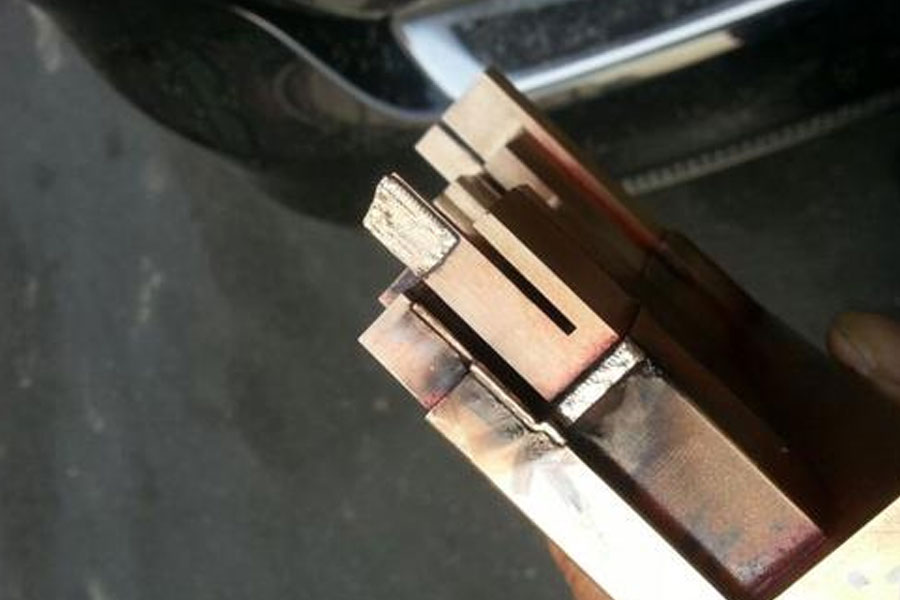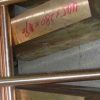
Nowadays, more and more beryllium copper mold materials are used in plastic mold manufacturing, and there is an upward trend! Why?
Characteristics of beryllium copper
- 1. Sufficient hardness and strength: After many tests, engineers can find out and master the best hardening conditions of beryllium copper alloy precipitation and the best working conditions and the mass characteristics of beryllium copper (this point is Beryllium-copper alloy is a prelude to the application of beryllium-copper alloy to the market as a formal product); The application of beryllium-copper material to plastic molds requires multiple cycles of tests to finally determine the best physical characteristics and chemical composition that meet the manufacturing and processing; theory; Proved by practice-the hardness of beryllium copper at HRC36-42 can reach the hardness, strength, high thermal conductivity required for plastic mold manufacturing, simple and convenient machining, long mold life, and save development and production cycles. .
- 2. Good thermal conductivity: The thermal conductivity of beryllium copper material is conducive to controlling the temperature of the plastic processing mold, and it is also easier to control the molding cycle, while ensuring the uniformity of the mold wall temperature; if compared with the steel mold, the molding of beryllium copper The cycle is much smaller, and the average temperature of the mold can be reduced by about 20%. When the difference between the average ejection temperature and the average wall temperature of the mold is small (for example, when the mold parts are not easy to be cooled), use the beryllium copper mold material to cool The time can be reduced by 40%. The mold wall temperature is only reduced by 15%; the above characteristics of the beryllium copper mold material will bring several benefits to the mold manufacturers using this material to shorten the molding cycle and increase the productivity; The uniformity of the mold wall temperature improves the quality of the drawn products; The structure of the mold is simplified because the cooling pipes are reduced; the temperature of the material can be increased, thereby reducing the wall thickness of the product and reducing the cost of the product.
- 3. Long service life of the mold: Estimate the cost of the mold and the continuity of production. The expected service life of the mold is very important for the manufacturer. When the strength and hardness of the beryllium copper meet the requirements, the temperature of the beryllium copper Stress insensitivity can greatly improve the service life of the mold. Before determining the use of beryllium copper mold materials, the yield strength, elastic modulus, thermal conductivity and temperature expansion coefficient of beryllium copper should also be considered. The resistance of beryllium copper to thermal stress is much stronger than that of die steel. From this point of view, the service life of beryllium copper is remarkable!
- 4. High thermal penetration rate: In addition to the thermal conductivity of the mold, the thermal penetration rate of the mold material is also very important to the plastic products. In the mold using beryllium copper, it can eliminate the traces of overheating. If the thermal penetration rate is low, The contact temperature of the distal region of the mold wall will be higher, which will increase the temperature difference of the mold, and in extreme cases will cause the temperature of the region to change from the sink mark at one end of the plastic product to the trace of overheated product at the other end .
- 5. Excellent surface quality: Beryllium copper is very suitable for surface finishing, which can be directly electroplated, and the adhesion performance is very good, and the polishing treatment of beryllium copper is also very easy.
Repair matters of beryllium copper
The welding repair of beryllium copper material can be easily achieved, but the purity requirements are high, which have special requirements for welding position, welding rod and inert gas. If the wall thickness of the welding cavity is greater than 3MM, the part should be preheated to 200 ℃, the fumes produced by welding are toxic, so the fumes must be evacuated in time. For manual arc welding, the electrode material is generally aluminum and copper. For the welding joint, tungsten inert gas shielded welding process can be used; metal wire can also be used Filling strips, usually recommended to use alternating current tungsten inert gas shielded welding process, this method can get a better welding effect and can make the filling strips and the base material together well, without adding additional penetration Agent. It should be noted here that-after repairing, the parts can no longer be hardened heat treatment and solution treatment.






